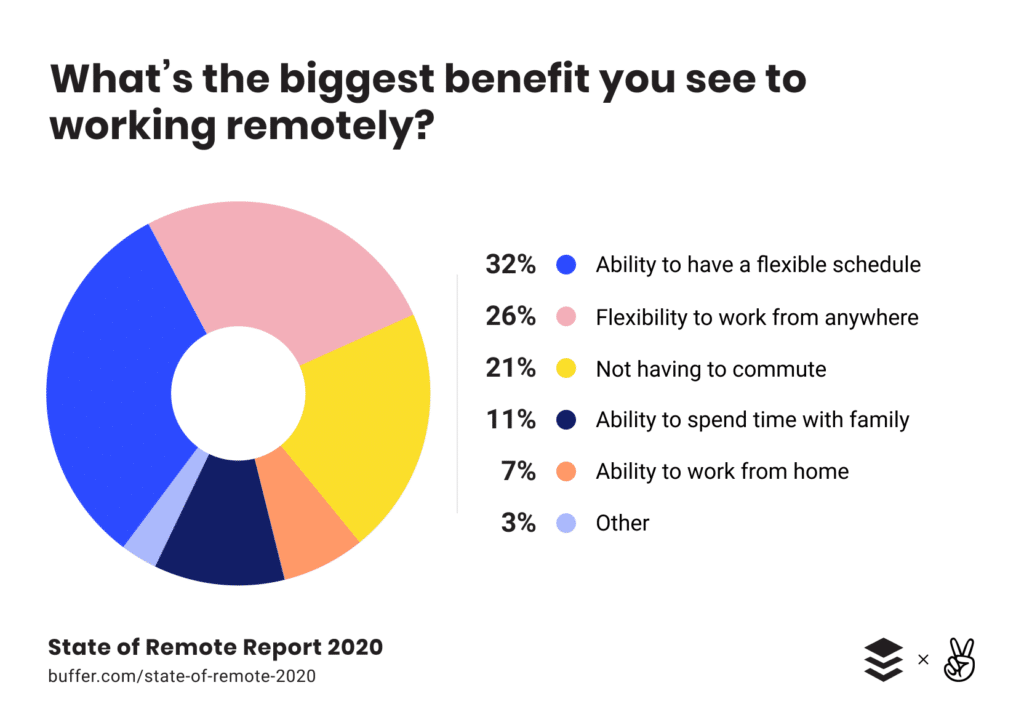An employee’s experience within a job role is often a reflection of the company itself. Often, companies focus on customer satisfaction, but don’t consider the importance of employee satisfaction.
While our main motivation to work may be to earn money, this doesn’t mean we don’t want to be happy when doing it. People want more than just your typical 9-5 job. They want somewhere they can feel fulfilled, somewhere where they can develop.
Businesses are having to rethink the way they do things. They need to adapt to become a place where employees actually want to work, not somewhere they need to. Millennials are a huge part of this. They account for about a quarter of the world’s population. And their attitude towards work is different from the baby boomer’s before them.
A report by the McKinsey Global Institute in the United States highlights the changing needs of millennials. They seek meaningful work, flexibility, connection, and mentoring. That’s where the term ’employee experience’ comes in.
What is meant by employee experience?
Employee experience refers to the journey of an employee throughout their time at a company, from the interview process onwards. It summarizes what people encounter and discover while at work. It can affect productivity, motivation, and overall employee morale.
Ultimately, it is the company’s responsibility to ensure the employee experience is a good one.
What is good employee experience?
Company culture is a defining part of an employee’s experience. This, paired with the physical and technological work environment will often determine how satisfied an employee is within the company.
Jacob Morgan, an author, keynote speaker, Forbes contributor, and futurist, created this equation:

Source
Each element of the equation is as important as the other. Here’s a breakdown of what is included in each part:
Culture
- Values of the business
- Attitudes of colleagues and managers
- Work style
- Pay and employee benefits
- Sense of purpose
- Work-life balance
Technology
- E-learning tools
- Access to devices
- User experience
- Up-to-date software and applications
Physical Space
- Workspace
- Office floor plan
- Workplace perks
- Interior design and decor
It’s vital that every step is relevant to the business. For example, a company that relies on technology, such as an app developer platform, should be equipped with the latest software. This wouldn’t be as great a priority for a small business like a clothing boutique. Instead, the physical space might be more important.
This simple yet effective equation demonstrates all the individual elements needed in order to achieve good employee experience. It’s a great starting point, and easy to build on. In the same way that businesses prioritize customer experience, they should also be focusing on their employees. Businesses are more people-orientated than ever before, with employee wellbeing becoming increasingly important.
This new rhythm of working life needs to be embraced by businesses if they want to recruit and retain employees.
The business impact of employee experience
Employee experience isn’t just about improving employee satisfaction. There are also many benefits that good employee experience can have on a business.
Performance management
Performance management is about ensuring a business is using the correct processes in order to achieve its goals. Ideally, this is continuously monitored by setting individual and team targets that are aligned to the objectives of the organization.
One of the ways performance management can be optimized is through developing the skills and abilities of employees. This would fall under the ‘culture’ part of the employee experience equation.
Encouraging employees to learn new skills and enhance their knowledge can give them greater job satisfaction. It can also help them refine their job processes and work more efficiently. So, by giving employees the chance to develop within their job role, not only are you fulfilling their needs, but you’re also improving your performance management.
Improve employee motivation
Employee motivation is crucial when it comes to business performance. Indeed, poor employee motivation can have a detrimental impact on your bottom line. Developing a great employee experience can lead to staff feeling happier, more productive, and motivated. This increased productivity can have an amazing impact on your business.

Source
A team who are motivated are likely to engage more with their work, and provide better results. It’s also a bit of a self-fulfilling prophecy, as engaged employees are usually happier employees. Once you’ve set it in the right direction, the impact should start to feedback on itself.
Reduces employee turnover
Improving the employee experience helps employees feel recognised and satisfied within their job role. When employees are happy at work and see the opportunity for career progression, they’re less likely to leave the business. A high employee turnover rate is expensive, both in monetary terms and in terms of office morale.
Start early: one of the most important things a business can do to secure employee retention is to have a great onboarding process. Only 12% of employees strongly agree that their company has a good onboarding process.
By ensuring you’ve got a solid onboarding system as part of your employee experience, you should also notice employee turnover is reduced. This can have an excellent impact on the business’s employee turnover rate.
What is the difference between employee experience and employee engagement?
There is often confusion surrounding employee experience and employee engagement. Put simply, employee experience is the overall experience someone has with the company. Employee engagement is how invested the individual is in the role and how much they care.
Employee experience in the input and employee engagement is the output. So, by improving employee experience, you’re likely to see an increase in employee engagement.
An example of this is the effect that working from home can have on employee engagement. Being distanced from the rest of their team can lead to increased distraction and disinterest. However, it can also improve employee satisfaction. Balancing these aspects is a vital part of any strategy.
Just 10 years ago working from home would have been completely different from today. Thanks to increasingly good technology, businesses can rely on employees to work remotely from almost anywhere in the world.
Eskenzi PR’s research shows that 91% of people prefer to have the option of remote work. This graphic shows exactly what it is that employees like about working from home:

Source
While feedback from employee experience surveys may show a desire to work more flexibly, you need to ensure their remote experience is as good as their in-office one. A good employee experience strategy should facilitate this. Check in with staff to see how they’re doing, and what methods you could implement to improve their experience (and in turn, their engagement).

Source
Allowing employees more flexibility can have a good impact on their overall wellbeing and employee experience. However, it’s important to maintain contact with them to maintain a positive experience and high engagement levels.
Key milestones in the employee experience
There are three key touchpoints in the employee lifecycle, all important milestones in the employee experience.
1. Recruitment
This is the first time an employee can get a real idea of the company. First impressions are important, on both parts. Potential applicants may look at Glassdoor for reviews from current and past staff, as well as looking at social media.
The candidate experience is the ideal time to ensure that the potential employee’s aspirations and ethics align with the business. It also gives the candidate an opportunity to see whether you provide the kind of employee experience they desire. They should be able to envision the kind of employee journey they will have at your company, and make decisions accordingly.
2. Onboarding
This is the stage where you’ve selected a candidate(s), and you now have to integrate them with the rest of the team. Employee onboarding is a crucial stage in the employee’s journey, because if they get off to a bad start, it may impact their attitude towards the company going forward.
When a new hire accepts the job offer, you should monitor their journey for the coming weeks and months to ensure they’re satisfied in their role. Encourage team messaging, extra training and team building to make them feel included.
3. Departure
Employee retention is difficult. Business leaders must be prepared for employees to leave the company. This is still a part of the employee experience. Ensure the process is as smooth as possible. The hope is that, even though they have left the company, they still have positive things to say about their time there.
How do you improve the employee experience?
Building a positive employee experience is all about refining your employee experience strategy. Now you know that culture, physical and technological environments are key in employee experiences, you can develop a plan to ensure all needs are met.
One of the best ways to do this is by listening to your current employees. After all, they are the people experiencing life as an employee in your company. Their opinion is invaluable. To collect the best feedback possible, businesses may wish to conduct employee engagement surveys.
You should collect employee feedback at each stage of the journey. Pulse surveys will give you an understanding of what you’re doing well, and what you need to improve for next time.
It’s also worth utilizing an employee journey map. This is where you visualize the various stages of an employee’s time within the company. It allows you to identify critical moments in their journey, as well as gain a better understanding of where action is needed. Below is an example of the employee journey.

Source
Some other tactics you can employ to improve employee experience include:
- Ensuring the work environment is clean and safe
- Assign mentors to employees to help with career progression
- Conduct regular performance reviews
- Offer great work perks
- Promote team building activities
- Encourage a healthy work-life balance
- Conduct exit interviews
- Improve communication with communication apps and additional software
How your human resource team can help
The purpose of HR teams as we know it is gradually shifting as employee motivation gains popularity. The new reality for human resource departments is a more employee experience-focused approach.
While HR may cover recruitment, onboarding, performance reviews, and work perks, this is a small part of the employee experience equation.
Aiming to improve employee experience forces a business to look at what structures they already have in place. Making adjustments to the business, such as expanding the HR department or creating a new employee experience department altogether can be beneficial for the company. Implementing new techniques, such as design thinking or employee journey maps, can be a useful step.
The long-lasting and meaningful connections that the HR leaders or employee experience department forms with employees will make sure their voices are heard, and support them throughout their employee journey.
Looking ahead
Employee experience is becoming more and more crucial, especially as more people find themselves working from home. In a world where video conferencing has taken over real-life meetings, it’s more important than ever to try and stay connected with employees, ensuring they’re still satisfied with their experience at the company.
Taking the time to redesign your employee experience strategy can help you stay one step ahead. Many companies with a well-received strategy have a competitive advantage over their counterparts, especially when it comes to recruitment and retainment.
With an uncertain future of work ahead of us, there is only one thing that remains clear- employee experience departments are here to stay.
Looking For Startup Consultants ?
Call Pursho @ 0731-6725516
Telegram Group One Must Follow :
For Startups: https://t.me/daily_business_reads




